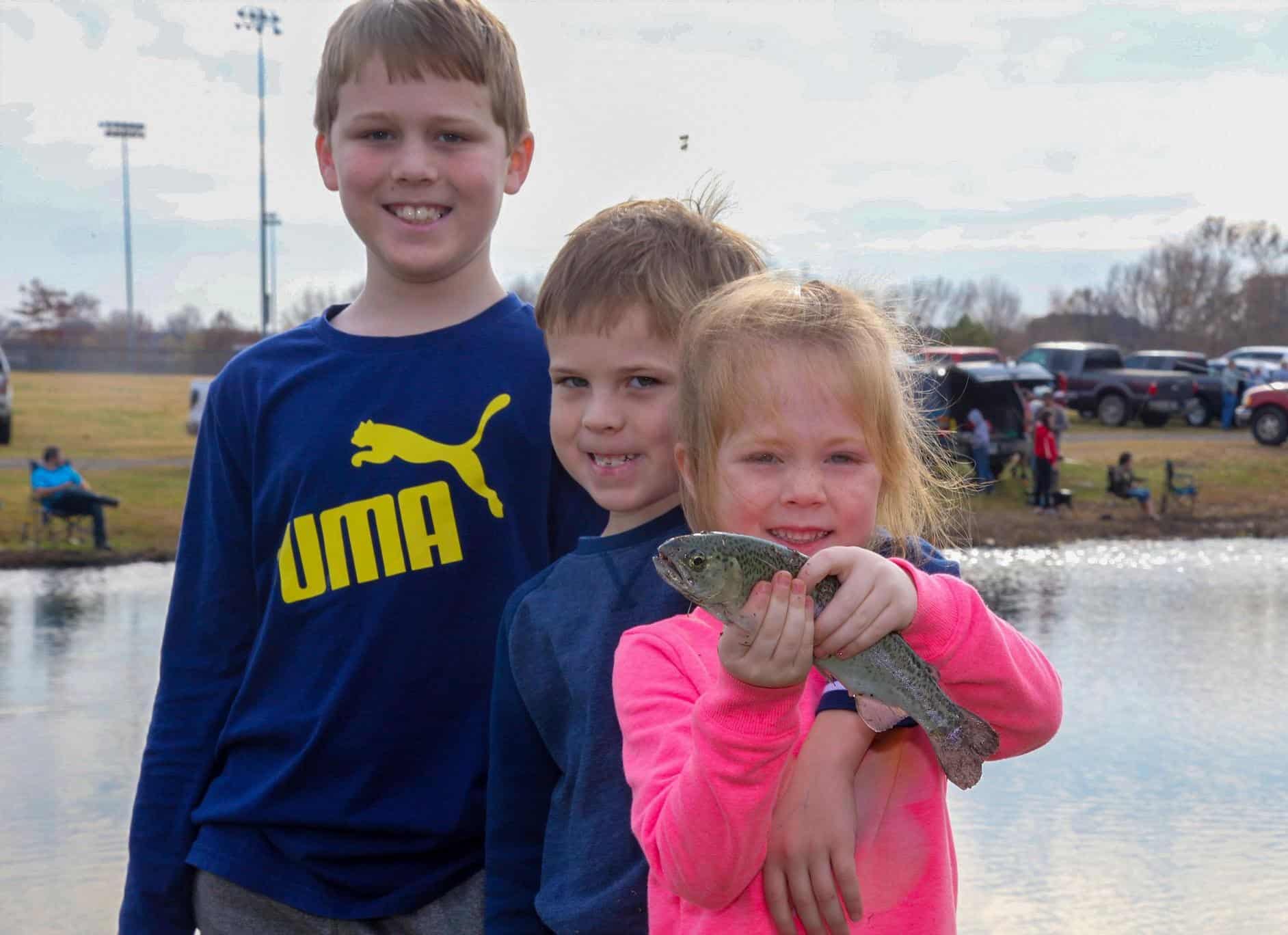Big, beautiful burn sparks new growth for prairie habitat on Camp Robinson SUA
ON 08-08-2025
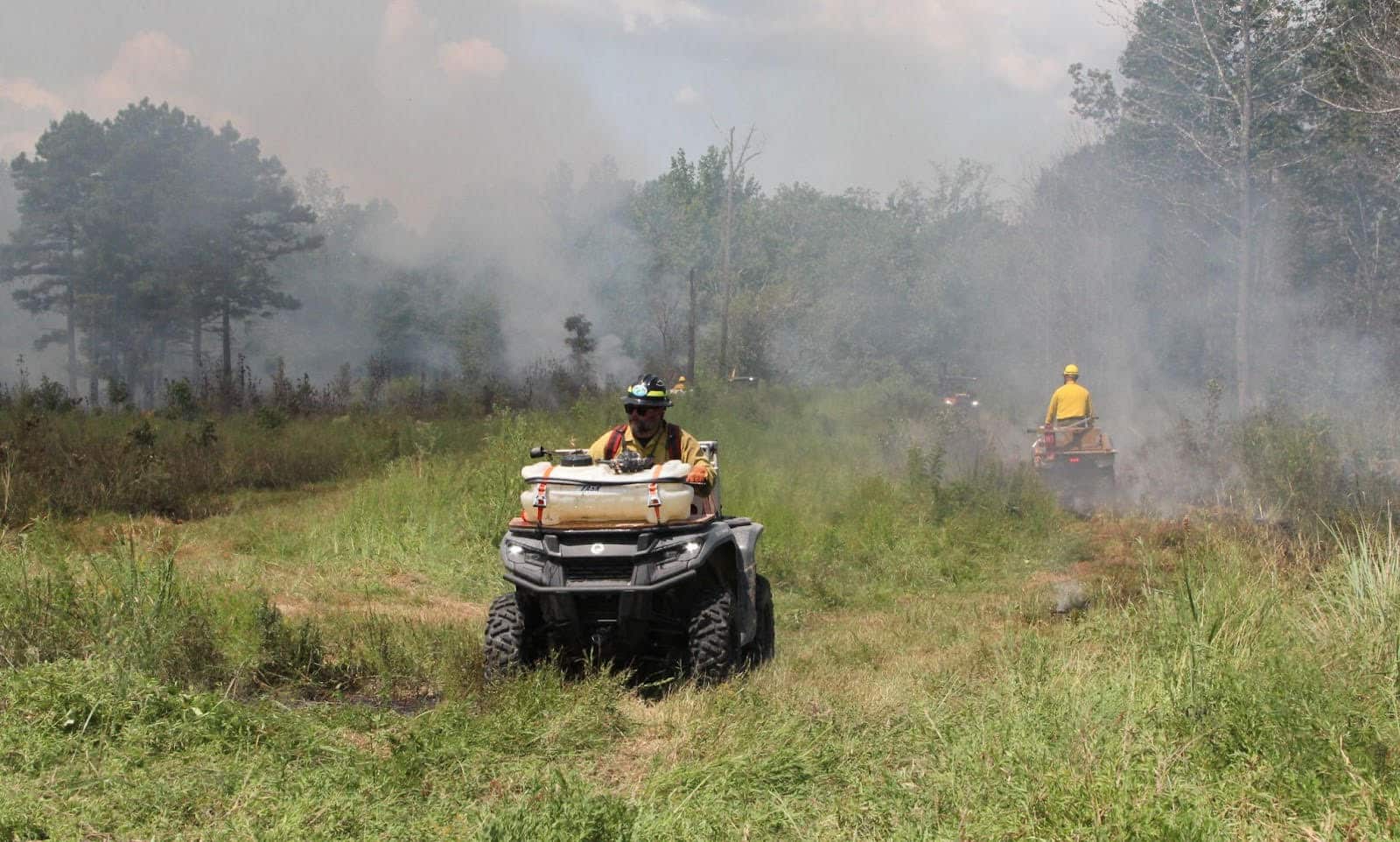
MAYFLOWER — Motorists on Interstate 40 may have noticed a few plumes of smoke in the air on their commute between Little Rock and Conway Tuesday, as the Arkansas Game and Fish Commission conducted a monumental 733-acre prescribed burn on Camp Robinson Special Use Area to improve wildlife habitat for northern bobwhite and many other wildlife species.
“This was the largest summer burn that we’ve ever conducted on Camp Robinson Special Use Area,” Steven Fowler, north-central biologist supervisor for the AGFC, said. “We’ve been planning to do this one for nearly a year and it took two weeks of intensive planning to pull everything together.”
In addition to the planning, the fire required a lot of boots-on-the-ground work. Sixty-four people spanning four AGFC divisions and four partnering organizations, including The Nature Conservancy, Central Arkansas Water, Arkansas Forestry Division and the Central Arkansas Prescribed Burn Association, worked together, and everything went according to plan.
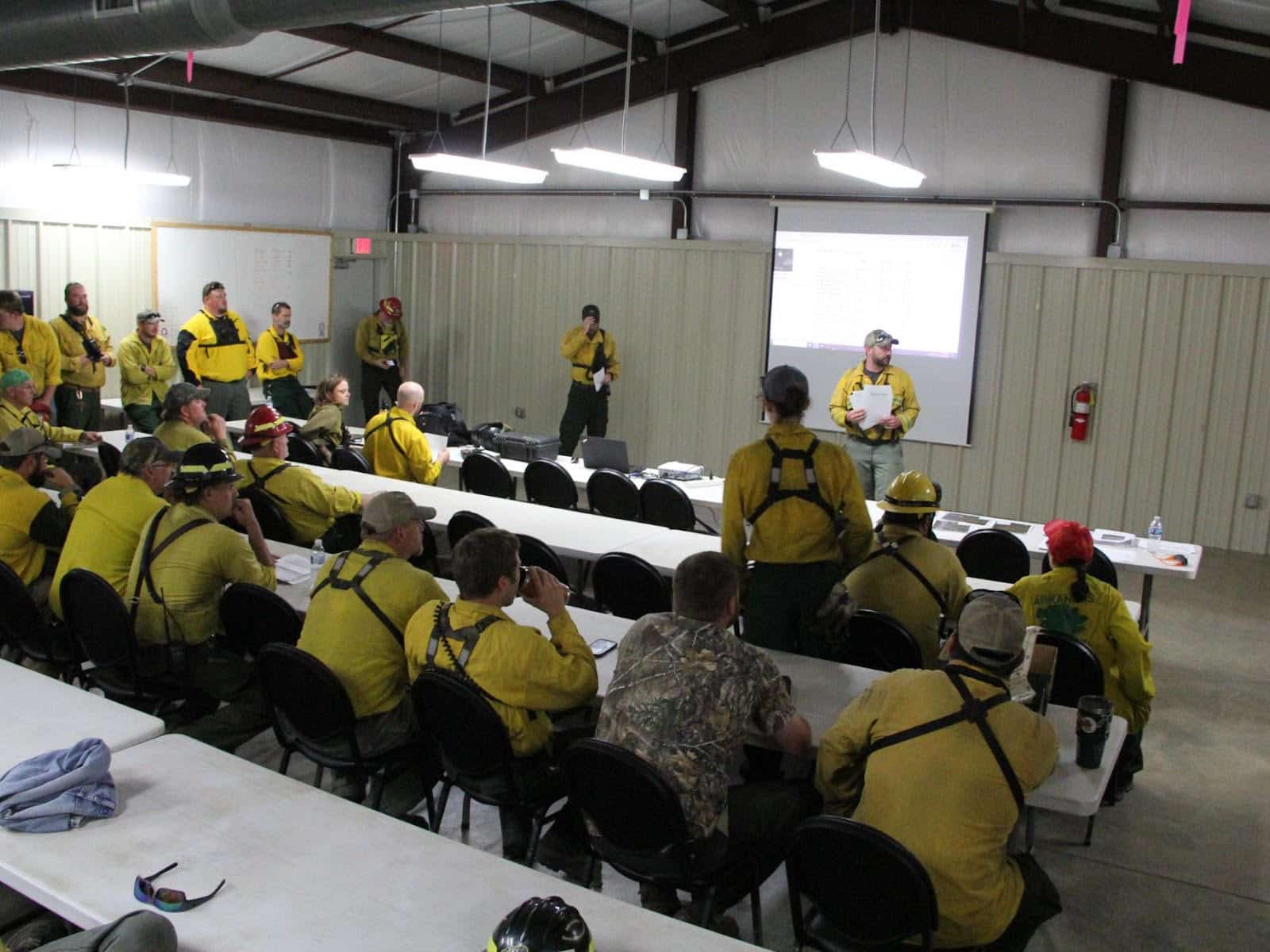
That plan was to kill off invading sweetgum thickets and other woody plants, reduce invasive plant species and increase diversity of native plants, especially broadleaf flowering plants.
“Prairies like we have on Camp Robinson need fire every 18 to 36 months to retain their vigor and prevent trees and shrubs from encroaching on them,” Fowler said. “This mimics the natural fires that historically occurred from lightning strikes and those intentionally set by Native Americans for thousands of years to clear land, reduce the risk of larger uncontrolled fires and maintain healthy ecosystems.”
Noah Wyatt, AGFC assistant regional supervisor in Mayflower, emphasized that the burn wasn’t a single fire, but took place on 10 different units.
“Conducting several small burns increases the diversity of the habitat on the landscape,” Wyatt said. “Growing-season burns are already a bit patchier than a winter or spring burn, and breaking the burn up into various blocks offers a variety of habitat to benefit all sorts of wildlife.”
In addition to the benefit of landscape-level diversity, conducting several smaller-scale burns made the project more manageable.
“We needed a lot of people to make this happen, but we were able to rotate people out frequently to ensure everyone’s safety,” Wyatt said. “It was already in the low 90s during the burn, and flame-retardant material isn’t necessarily breathable fabric. It’s hot, sweaty work, but this was the best way to improve habitat on such a large scale.”
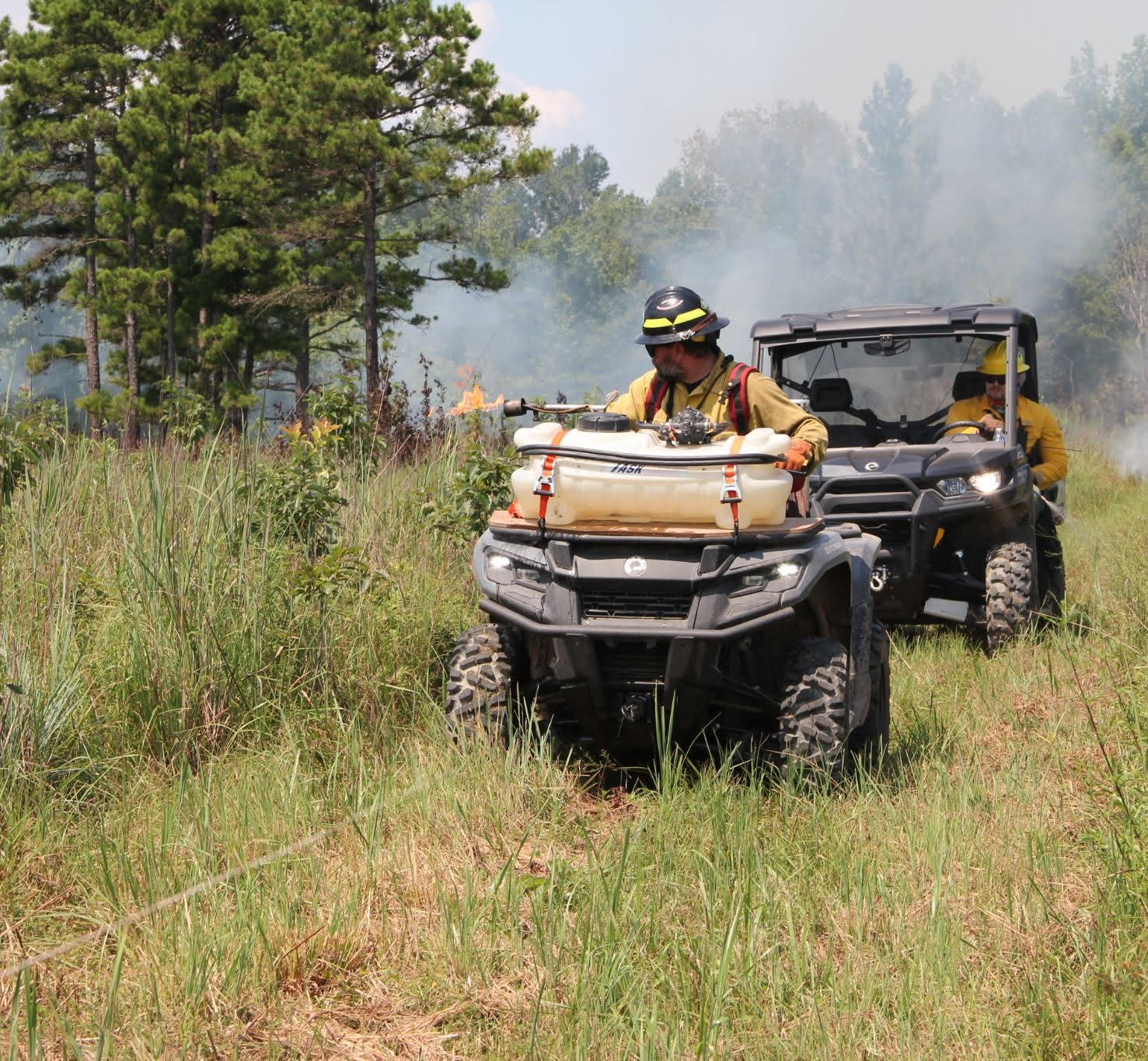
Another measure to increase the safety and efficiency of the burn was the use of a specialized ignition drone. The flying machine is equipped with special fire-starting pods called delayed-aerial-ignition devices and nicknamed “dragon eggs” by many Forest Service crews.
These polystyrene balls are filled with chemicals that, once primed by the drone and released, burn for a few minutes to start fires in remote areas where burn crews can’t reach quickly or safely.
Emily Roberts, prescribed fire program coordinator for the AGFC, added that the drone is equipped with a thermal camera to keep a bird’s eye view on the fire, inside and out.
“We can see where some places within the burn may need a little extra ignition to get started,” Roberts said. “And the drone covers much more ground than someone having to drag a drip torch or drive an ATV through the unit.”
Roberts also keeps tabs on areas surrounding the burn to ensure no “hot spots” spring up outside of the team’s containment zone.
“We don’t want the fire escaping our planned units, and the thermal imaging picks up any spots where the fire has escaped so you can act quickly to control the situation,” Roberts said.
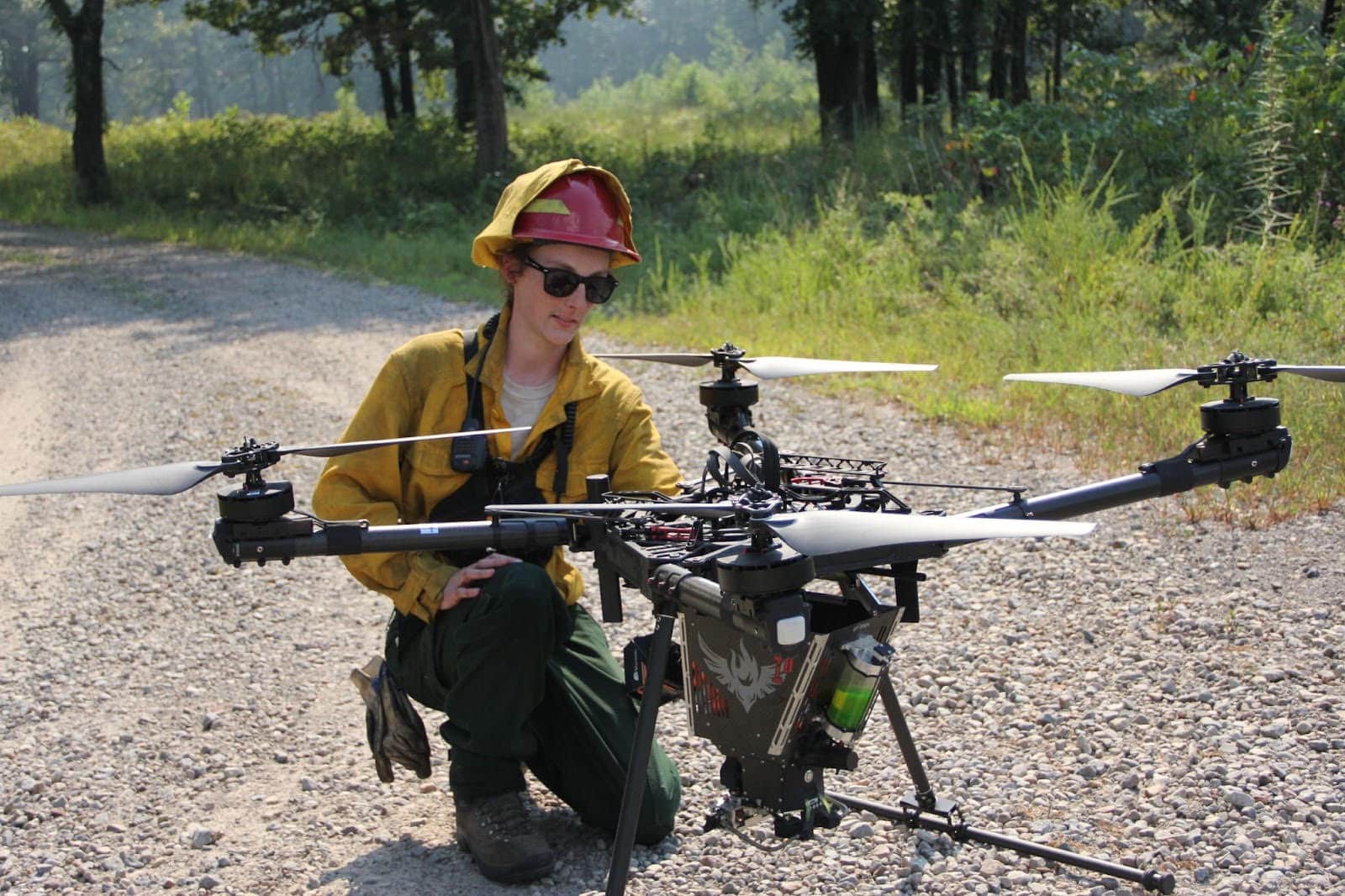
Fire is the most efficient way to manage prairie and savannah habitats, and in the case of the prairies found on Camp Robinson, Fowler says it’s the only way to keep the initial habitat type intact.
“Prairie management is much different than managing an open field or forest; prairies have a different soil type and seedbank that evolved with fire,” Fowler said. “If you ever disk a prairie, it’s never the same.”
Roberts says late growing-season burns affect woody plants like sweetgums much more than winter or spring burns.
“Fire during this time of year is slower moving because of the moisture still held in living plants,” Roberts said. “Flames on the ground linger around individual plant stems longer than they would during the winter or early spring when most of the plant material above the ground is dead and dry. The longer the flames sit at the base of a woody plant stem, the more likely it is that the fire will topkill that plant.“
Tuesday’s fires met the initial goal of topkilling at least 50 percent of the encroaching woody plants.
“Once trees like sweetgums get to about 6 feet tall, they’re much more resistant to prescribed fire and require much more labor-intensive and expensive options to remove, so we’re pretty happy with the results,” Roberts said.
Wyatt adds the skeletons of those burned up sweetgums and woody shrubs still serve a valuable purpose post-burn.
“Ground-nesting birds, particularly northern bobwhites and young turkeys, need overhead cover to offer some protection from hawks and other avian predators,” Wyatt said. “These patchy summer burns open up the bare ground the birds need to move around and leave the vertical stems to give some protection. The fire stimulates broad-leaved plants that will offer a roof over the bobwhites and attract tons of insects that young bobwhites and turkeys need for food.”
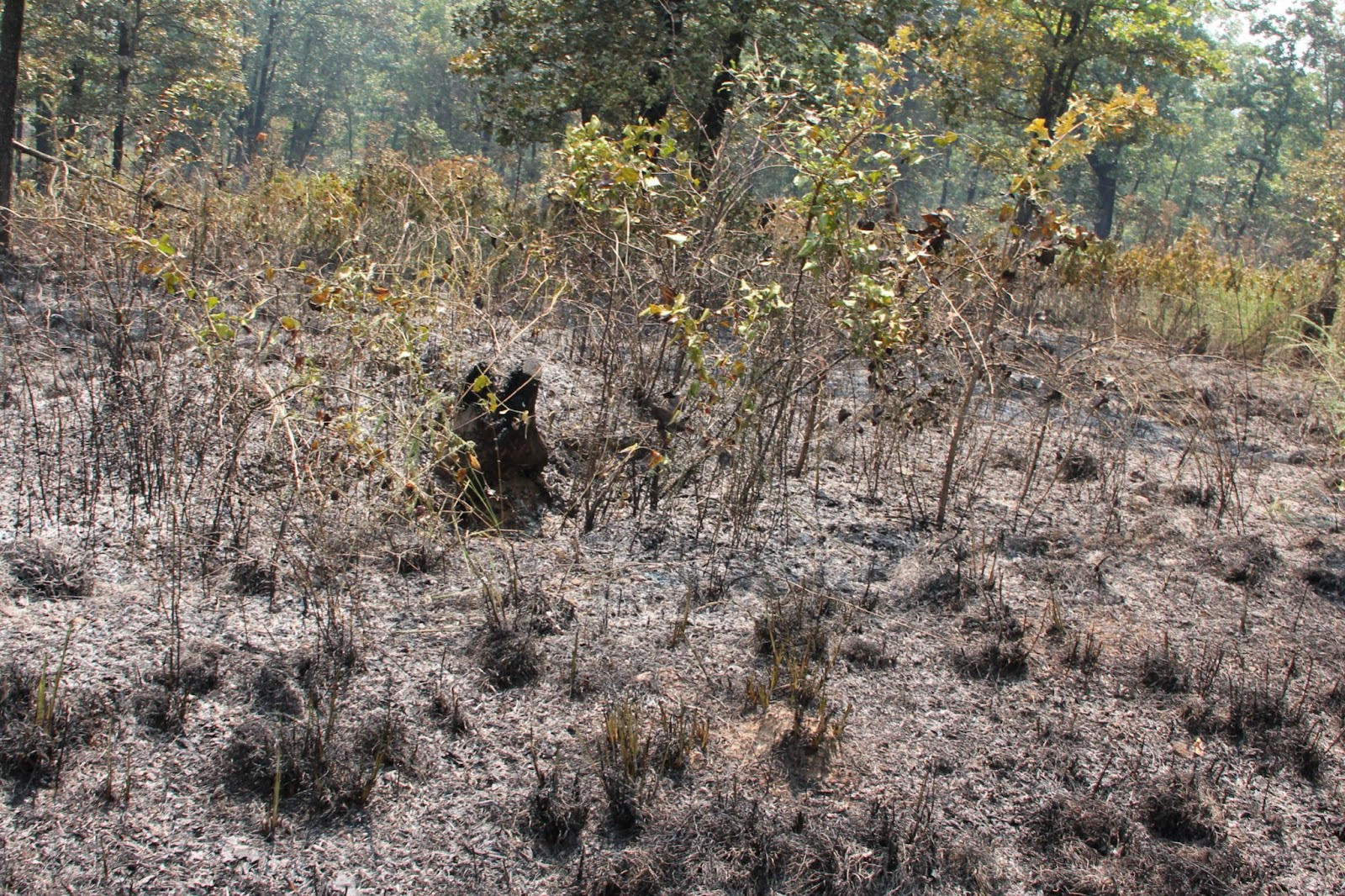
Roberts said she is extremely grateful for all the help from partners during the prescribed fire and compliments the excellent work and efforts of prescribed burn associations and landowners volunteering to put fire back on the landscape to re-establish grasslands, prairies and other open habitats critical to pollinators, ground-nesting birds and many other species of upland wildlife.
“The prescribed fire community in Arkansas is tightly interwoven,” Roberts said. “This was a great example of people coming together across agencies to accomplish a common goal – to restore habitat.”
####
CUTLINES:
SMOKY FIELD
The AGFC’s largest summer burn ever conducted on Camp Robinson SUA required dozens of people and five agencies to improve habitat for quail and other species on the area. AGFC photo by Keith Stephens.
BRIEFING
Wyatt briefed staff before the burn on all safety protocols and operating procedures to ensure a controlled environment during the operation. AGFC photo by Keith Stephens.
FOUR WHEELER
Growing season burns are much slower and patchier than burns held during winter or spring. AGFC photo by Keith Stephens.
DRONE
Roberts worked with an aerial drone to keep tabs on the burn and ensure good coverage. AGFC photo by Keith Stephens.
BURNED GROUND
Dead, standing saplings provide cover from avian predators for bobwhites and other wildlife while broad-leaved forbs begin to sprout post-burn. AGFC photo by Keith Stephens.
Recent News
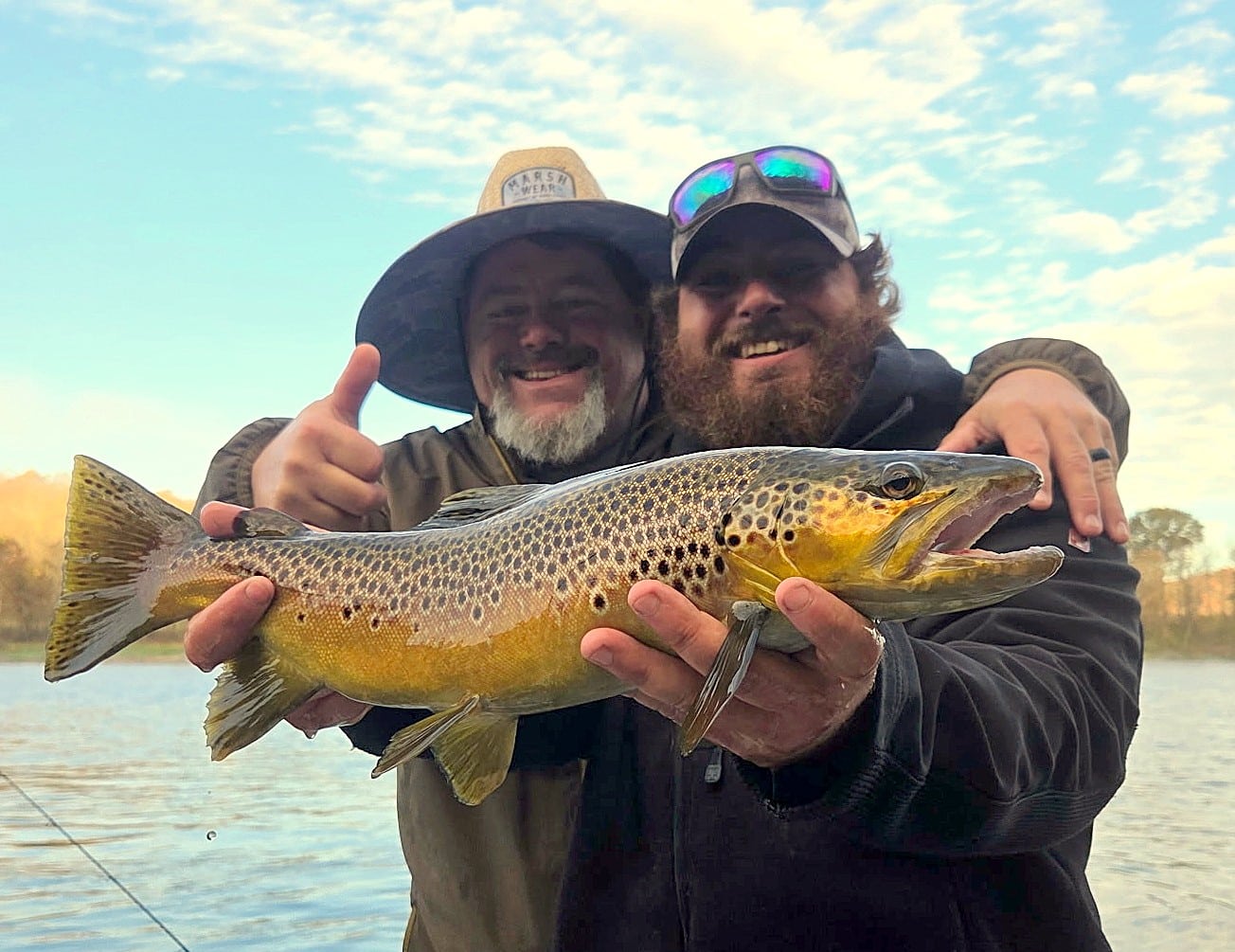
Arkansas Wildlife Weekly Fishing Report
Nov. 13, 2025
Subscribe to Our Weekly Newsletter E-mails
Don’t miss another issue. Sign up now to receive the AGFC Wildlife Weekly Newsletter in your mailbox every Wednesday afternoon (Waterfowl Reports are published weekly during waterfowl season and periodically outside the season). Fishing Reports arrive on Thursdays. Fill in the following fields and hit submit. Thanks, and welcome!

